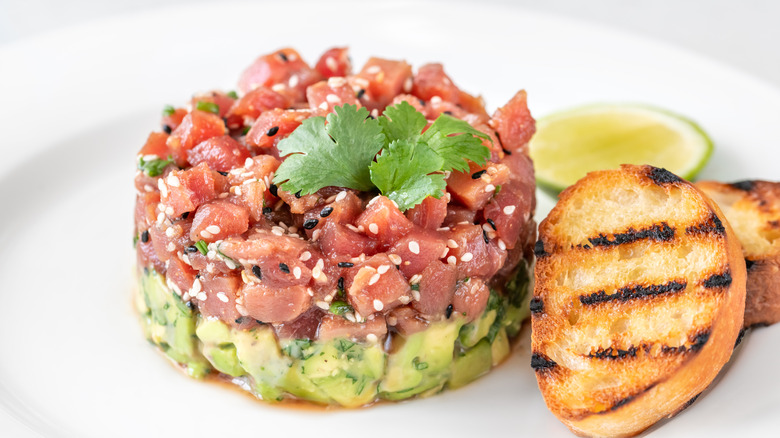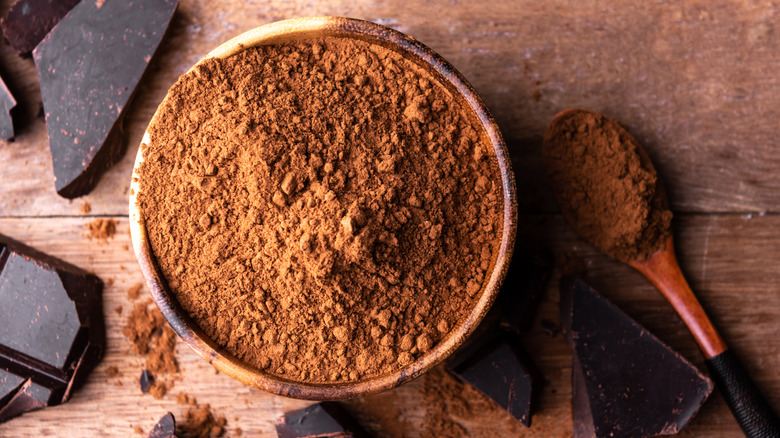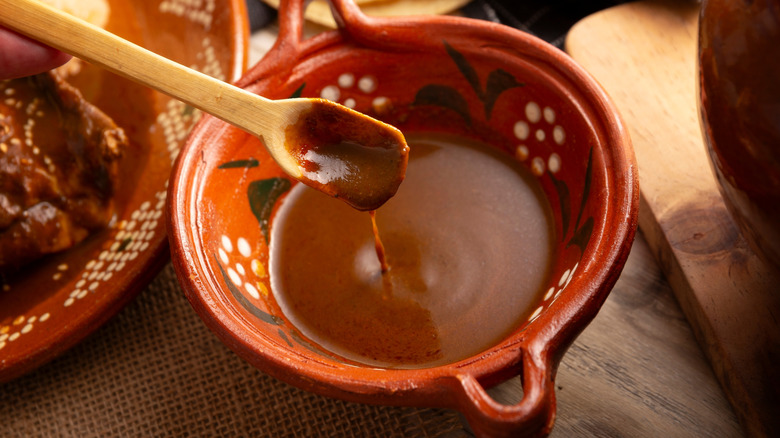You Should Be Topping Your Tuna With This Powder Usually Reserved For Desserts
We may receive a commission on purchases made from links.
There are a lot of flavor combinations that might not seem like they should work. With the rise of food tips on TikTok and Instagram, there have been plenty of people — seemingly eager to see the world burn — who recommend adding ingredients to dishes that don't make for good results. However, there are those blends out there that might sound odd but are actually an amazing trick, or a cultural tradition you just didn't know about before. As it turns out, topping tuna with chocolate is one of the latter.
While some food pairings appear to be manufactured for shock value on social media, there's some fascinating science behind this particular combo. Tuna and chocolate is just one in a long line of strange mixes that work, backed by scientists who have explored ways to find even more secret combinations. Most often, it comes down to there being shared or similar chemical compounds between the ingredients, as detailed in books like "The Flavor Matrix" by James Briscione.
Is tuna and chocolate really a thing?
While it's one thing to say that you can add chocolate to tuna and the result will taste good, there's always the question of the difference between "can" and "should". But tuna and chocolate is more established than you might think it would be. You could once find chocolate-covered tuna on the menu at the former Fishmonger's Market in San Diego, California. Chef Frank "Frankie the Bull" Terzoli is a fishing captain, won "Cutthroat Kitchen" in 2013, and appeared on "Top Chef", so he clearly knew what he was doing combining dark chocolate and tuna.
However, tuna and chocolate actually has a richer history outside of the United States, specifically in Venice. A cultural food in Venice is cicchetti, which features small bites served on a piece of baguette, feeling like a fusion between bruschetta and tapas. Historically, cicchetti were eaten with wine while relaxing in the shade. One notable example of the snack is cicchetto tonno e cacao. Comprised of tuna and cocoa, the appetizer is made in various ways but can be served simply as tuna tartare topped with cocoa power. While you might expect the cocoa to have a cloying or overpowering flavor, that's not what this sort of combination is about. The cocoa powder is said to provide a hint of dark chocolate flavor to play off the flavors of tuna and olive oil.
The precedent for savory chocolate dishes
When you hear of chocolate, most people probably tend to think of sweet things: a box of chocolates, chocolate cake, or perhaps a chocolate mousse. But if you look in the right places, there is a wealth of savory, meat-based dishes that use chocolate and cocoa powder, celebrating a rich heritage behind them. Tasting some of those dishes can help you to understand how (and why) someone ever decided to try adding chocolate to tuna.
Cocoa powder — without the additional sugar and sweetener that you'll find in many applications — actually provides a bitter taste that can go well with meat, especially beef. Those flavors can be found in anything from chocolate espresso steak to a chocolate molasses sauce on roast pork. Cacao itself comes from South America, and many recipes from South and Central America reflect that — perhaps most famously, the rich mole of Mexican cuisine. Find out for yourself why cacao goes so well with tuna — and then wrap your head around why pickles taste amazing on pizza and the Champagne and potato chip combo is life.


